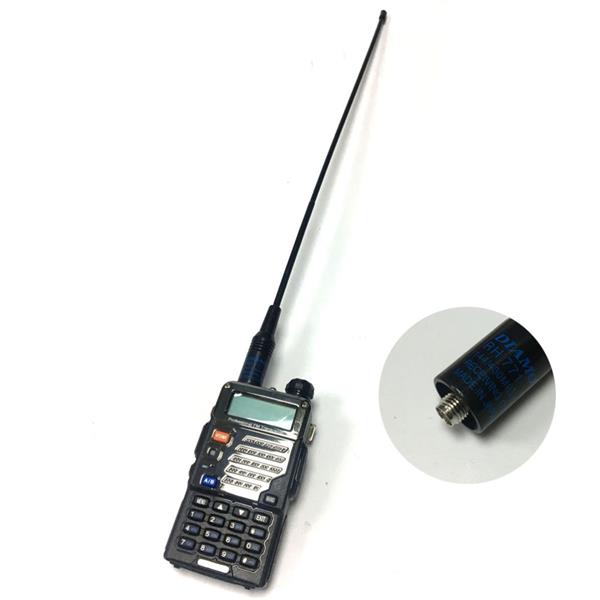I got my GMRS license today! I'm now WRAX289 as well as Ki7QFV. Why did I do that, might you ask? Because in an emergency, not everyone is a ham, and part of our job is bridging from system to system. GMRS, at least in my city, is used to provide communications between different sections of the city (known as community hubs) back to the Emergency Operations Center, and even to/from small neighborhood units. You too can get a GMRS license (no test required!) by going here: https://www.gmrs1900.net/blog/93-tutorials/122-getting-your-gmrs-license
So what's in your mobile kit? I drive a station wagon... with a bunch of stuff:
My UHF/VHF radio gear:
-Deep cell battery w/ pigtails for anderson power poles and cigarette lighter adapter
-Battery charger/tender
-DC/AC inverter (350 watt!)
-HT Baofeng UV-5R radio with extended battery
-Charger for my HT radio (AC power)
-Extra charged batteries for my HT radio
-Signalink for my HT radio for data transfers (mostly winlink)
-HT APRS to cellphone data cable (backup APRS option)
-Kenwood V71 dual band radio (for the higher 25/50 watt radio needs)
-magmount UHF/VHF antenna (with pigtail adapter to also support HT radio)
-downloaded and printed repeater list w/ offsets and tones
-downloaded radio manuals, FCC guide and other content on my cell phone (offline use)
-Printed paper contact list (phone numbers, email addresses)
-one-ear headset w/ microphone for the radio (for use while driving or sitting)
-paper copies of my ham license and GMRS license (and driver's license)
-basic toolkit (pliers, snap screwdriver with bits, cutting blade, anderson power poles, fuses, crimper)
My EmComm and support gear:
-Toughbook PC laptop, dc charger, AC charger
-HP Officejet 200 printer, battery, paper, and extra ink, charging cable
-Canon scanner
-Pen, highlighter and Paper
-Paper Maps and critical addresses printed out
-cell phone charger
-printed copies of critical emcomm forms
-ARES field manual
-GMRS radio, spare batteries, charger and headset
Other car go-kit emergency and overnight supplies:
(backpack)
-3 days of food and water, mess kit (metal fork/knife/spoon/bowl, cup)
-water purification tablets in a bottle
-leatherman
-first aid kit
-waterproof disposable "vacation" camera
-heavy gloves
-toilet paper and pads (can also help with first aid)
-rollup hat with a brim (waterproof is helpful)
-sunscreen
-quick change (spare underwear, socks, tshirt)
-small toiletries (toothpaste, deodorant, toothbrush, shampoo, face soap, tiny towel)
-duct tape, 3 garbage bags and zip ties
-wind up flashlight
-wind up am/fm portable radio
-small dust-mask
-spare glasses
-small whistle, mirror and old fashioned compass
-nylon rope (25 feet)
-sharpie and waterproof paper
-rain poncho (small, pre-packaged)
-small folding camp chair-flares and jumper cables, spare oil, spare antifreeze, spare full-size wheel and tire
-sleeping bag and small tent with rainfly
-watershoes (can be used in public shower, and as spare dry shoes in an emergency)
Stuff I'm planning to add after visiting KE7HLR's page:
http://www.bay-net.org/docs/personal_go_kit.pdf
-safety reflective vest
-laminated maps
-paperclips
-binoculars
-hand sanitizer
-heavy duty ziplock quart and gallon bags (2 each)
-clipboard
Download these Electronic printable Forms so I can print in the field
ICS 205—Incident Radio Communications Plan
ICS 205-A—Communications List
ICS 213—General Message
ICS 216—Radio Requirements Worksheet
ICS 217—Radio Frequency Assignment Workbook
ICS 309—Communications Log
Apps on my Toughbook PC:
-Winlink Express
-Soundmodem
-FLDigi
-Libre Office Apps (to open/edit Word/Excel/PPT type docs offline)
-PDF reader
-CutePDF (allows you to print to PDF files)
-OCR software for scanner
-Zip/Unzip utility
-Photo processing app (to crop, reduce DPI, color depth, for sending)
Apps on my iphone:
-repeaterbook (repeater/frequency list)
-Pocketpacket (aprs)
-ham square (to get grid code)
-echolink (internet/cell data connected to ham repeaters)
-PSK31 (for decoding audible psk31 messages with your phone)
-manuals, etc downloaded as local pdf files (in ibooks)






















